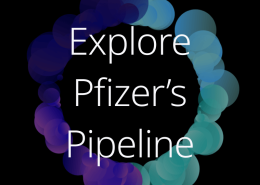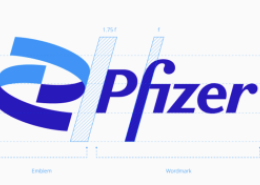Pfizer Development Pipeline Shows Advances In High-Priority Disease Areas
Phase 3 Clinical Trials Recently Started for the First JAK Inhibitor for Rheumatoid Arthritis and Tanezumab for Pain Company Achieves March 2008 Goal of Advancing 10 to 12 New Treatments to Phase 3 in One Year
(BUSINESS WIRE)--Pfizer Inc today provided an update to its pipeline, highlighting the progression of clinical programs in high-priority therapeutic areas, and announced the start of Phase 3 clinical trials for two new molecular entities. In total, the company initiated seven Phase 3 programs within the past six months.
Earlier this year, Pfizer started Phase 3 studies in a first-in-class JAK inhibitor (CP-690,550), the first orally-administered, disease-modifying antirheumatic drug (DMARD) for rheumatoid arthritis in 10 years, based on promising Phase 2 efficacy and safety data. Rheumatoid arthritis impacts 1.3 million Americans and can be severe, debilitating, deforming and even shorten life. Pfizer is also conducting Phase 3 trials with tanezumab, a fully-humanized monoclonal antibody targeting nerve growth factor. Tanezumab significantly reduced pain in patients with osteoarthritis of the knee in clinical studies to date.
“We are executing on our commitment to bring new and effective therapies to patients around the world in areas where there is a significant unmet medical need,” said Ian Read, president, Worldwide Pharmaceutical Operations.
The company has initiated 12 Phase 3 clinical programs since March 2008, achieving its goal of advancing between 10 and 12 new molecular entities and new indications into late-stage development by March 2009. Pfizer reaffirmed the additional R&D objectives shared with investors in March 2008: 15-20 Phase 3 starts in 2008-2009, growing the Phase 3 pipeline to at least 24 and as many as 28 new molecular entities or new indications by December 2009 and 15-20 regulatory submissions from 2010 to 2012.
The Pfizer pipeline now reflects a therapeutic-area focus, with 100 programs in Phase 1 through Registration. In total, 21 programs advanced in the pipeline since September 2008, 12 of them in the identified high-priority disease areas of diabetes, oncology, inflammation/immunology, Alzheimer’s disease, psychoses and pain.
“We are continuing to better align our pipeline candidates with the identified needs of patients and healthcare providers worldwide,” said Mr. Read. “Importantly, our new business unit structure will enable us to advance our development programs with urgency and efficiency in support of achieving our regulatory submission goal and providing high value therapies.”
Pfizer recently formed several smaller, customer-focused business units to better anticipate and respond to customers’ and patients’ changing needs and to ensure the alignment of research and development activities with these needs. Each unit has responsibility for late-stage product development and commercialization. This approach allows for rapid decision-making and a more efficient use of resources to maximize the value of the company’s pipeline and, as a result, will enhance Pfizer’s ability to invest in long-term opportunities.
Pfizer added two late-stage candidates to the pipeline as part of its continuing effort to pursue the best external science through business development opportunities and partnerships. Within the Primary Care Business Unit, Pfizer in conjunction with Medivation is developing Dimebon, currently in Phase 3 for the treatment of Alzheimer’s disease (AD). Dimebon’s mechanism is thought to be distinct from currently available AD medications. It has successfully completed Phase 2 studies for Huntington’s disease, a hereditary, degenerative brain disorder for which there are limited treatment options.
Pfizer’s Specialty Care Business Unit entered into a strategic alliance with Auxilium Pharmaceuticals to develop XIAFLEX™, a new medicine being studied for Dupuytren’s contracture in Phase 3 and Peyronie’s Disease in Phase 2.
“Last year, we refined our approach to research by refocusing our pipeline to allow us to better select targets and molecules for development and move high-priority projects forward with improved cycle times,” said Martin Mackay, PhD, president of Pfizer Global Research & Development. “We will continue to drive our strategies and make the operational improvements necessary to maximize our investments, accelerate development, and advance medical science.”
Pfizer continues to prioritize its portfolio in order to direct resources to projects in areas of unmet medical need and market opportunity. This approach has resulted in the discontinuation of certain development programs that did not meet its criteria regarding therapeutic area focus or measures of potential clinical utility and customer value. As a result, 26 programs were discontinued in the last six months, 15 as a result of strategic decisions made last year and 11 due to clinical attrition.
The Company will seek to monetize some of the compounds that have been discontinued through business development transactions, such as out-licensing or partnering.
Pfizer’s pipeline is posted at www.pfizer.com/pipeline.Accompanying information includes compound name, target disease, phase of development and, for late-stage programs, mechanism of action.
Pfizer Inc: Working together for a healthier world™
Founded in 1849, Pfizer is the world's largest research-based pharmaceutical company taking new approaches to better health. We discover, develop, manufacture and deliver quality, safe and effective prescription medicines to treat and help prevent disease for both people and animals. We also partner with healthcare providers, governments and local communities around the world to expand access to our medicines and to provide better quality health care and health system support. At Pfizer, more than 80,000 colleagues in more than 90 countries work every day to help people stay happier and healthier longer and to reduce the human and economic burden of disease worldwide.
DISCLOSURE NOTICE: The information contained in this release is as of April 2, 2009.Pfizer assumes no obligation to update any forward-looking statements contained in this release as the result of new information or future events or developments.
This release contains forward-looking information about various products in development and potential additional indications for certain in-line products, including their potential benefits, and about Pfizer’s Phase 3 pipeline and planned regulatory submissions, that involves substantial risks and uncertainties. Such risks and uncertainties include, among other things, the uncertainties inherent in research and development; decisions by regulatory authorities regarding whether and when to approve any drug applications and supplemental drug applications that have been or may be filed for any such products in development and additional indications, as well as their decisions regarding labeling and other matters that could affect the availability or commercial potential of such products and such additional indications; and competitive developments.
A further description of risks and uncertainties can be found in Pfizer’s Annual Report on Form 10-K for the fiscal year ended December 31, 2008 and in its reports on Form 10-Q and Form 8-K.
Pfizer Inc
Media:
Kristen Neese, 212-733-8926
OR
Investors:
Jennifer Davis, 212-733-0717







